#magical theory
Note
hwat is the difference between witch and wizard? surely it cant be gender... what is your thinking oh evil one? what makes you a wizard?
if the universe is an ocean, magic is like the tides. witches, being wise, sail in the direction the tide is flowing—wizards, far too busy being clever to be wise, sail directly against the tide; just to see what happens
7K notes
·
View notes
Text
THANK YOU SO MUCH !!!! vol.2

PLS DELETE OLD FILES (catel, DTS …, bookhp). Thank you so much for your support! report me any issues please :)
Пожалуйста, удалите старые файлы (их имена catel, DTS …, bookhp). Большое спасибо за поддержку! Пожалуйста, пишите мне о любых проюлемах :)
GRAB IT FREE SFS BOOSTY
Thank you for sharing <3
@sssvitlanz @no-habla-simlish @witchysimmers @witcheshistory @ojoquevecorazonsen @ivysccfinds
Magic realm req. for functional cauldrons!
Старые файлы выглядят так (что смотреть стыдно хаха):
Shame old preview under the cut:
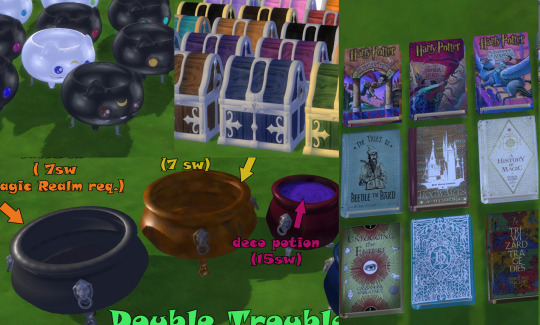
#ts4cc#ts4 download#ts4 custom content#sims 4 cc#sims4cc#ts4#sims4#sims 4 custom content#ts4 witchy content#sims4 decor#witchy#sims 4 cauldron#ts4 cauldron#cauldron#ts4 magic#ts4 magic realm#magical theory#history of magic#maxis match#sims 4 genshin impact#ts4 genshin impact#gensin impact
93 notes
·
View notes
Text
Elemental Work Crash Course
Hello friends! As a west witch I find myself in a lot of elemental spaces, but as an elemental pagan I feel like we get little to no representation without wicca being present so this post is for all my friends who may be looking into elemental work and want to know what to expect! This is an introductory post so if anyone is interested in further information let me know in the comments!

Earth
Common Lessons tend to include grounding, understanding your place within it all like your social circles, life itself, or even the ecosystem. People also tend to find out how to see beauty even when they feel there is none, home and hearth magic, generational magic, and harnessing your own power. Its important to recognize earth is extremely giving, often giving things without expecting anything in return. Remember to give back to the earth when you can in your practice, it isn't fair to take things without giving back. Eventually earth takes all things back from the living, so remember that earth is as powerful as she is kind
Darker Aspect/Element: Rot
How to honor and find these teachings:
Going out in nature
Taking care of plants
Herbal work
Community service
Exploring
Grounding and meditation outdoors
Connecting to earth itself
Evaluating what it means to be human
Common forms of divination
Osteomancy (Burning Bones)
Abacomancy (Dirt)
Dendromancy (Tree reading)
Falling petals or leaves
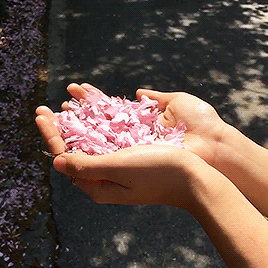
Air
Common lessons from air tend to be quick and ever present, air speaks rather quickly to people and messages change! Its best to keep a log of signs and messages you receive because it tends to be a pebble trail on your journey. Air teaches how to keep calm in tense situations, creating your own path on the journey of life, going with the wind and learning to not value materialistic lifestyles, plus learning how to be more gentle with yourself and others!
Darker Aspect: Tempest
How to honor and find these teachings:
Breath work
Spontaneity and leaving your comfort zone
Living to the fullest (however that might look for you!)
Dance or Hand motions
Meditations
Keeping sword or athame imagery as a talisman
Storm tracking
Common forms of divination:
Smoke Scrying
Wind Watching
Electromancy (By Lightning)
Austromancy (By Clouds)

Fire
Common lessons in fire encourage you to listen closely and not rely so much on searching for messages. In most mythos fire speaks once per session, when its burnt out usually the message is over. Fire teaches us how to be confident in our work, ambition, and performance. Fire likes to throw a lot at you and teach you adaptability, and most importantly how to be the best you can be. You can learn a lot from just a little flame.
Darker Aspect: Magma
How to Honor these teachings:
Practicing Confidence
Glamour Magic
Using your backbone/saying no more
Making friends in odd places
Hosting bonfires/tending to a hearth fire
Using candle magic
Common forms of divination:
Fire Scrying
Candle/Wax reading
Flame Shape reading
Casting knives

Water
Common lessons range depending on what you are looking for! Water can teach you how to be calm and collected, but also encourages you to be fluid! so if you need to unleash the flood you know when its appropriate to do so. You also learn how to go with the flow, how to be persistent, and how to be a fierce enigma. Water is also very humbling at times, so you will learn a lot about yourself.
Darker Aspect: Abyss
How to honor these teachings:
Emotion based meditations
Shadow work
Being in tune with yourself
Swimming
Boating
Fishing
Beach cleanups
Exploring your waterways
Common types of divination:
Water scrying
Waves
Rainfall
Storm tracking
Mist/Dew
#elements#elementals#pagan witch#witchblr#witch#magical theory#grimoire#witchcraft#culturalexploration#divination#paganism#paganblr#pagan#earth#air#fire#water#spells
101 notes
·
View notes
Text
The reason we put protective spells over doors and windows is because they're designated points of entry for energy in all forms. That's the spot that allows flow.
Ever wonder why you typically don't enchant a wall the same way?
A wall is built with eons upon eons of intention to keep undesirable things out. Inclement weather, those who would do harm, etc. A symbol almost as old as humanity itself, reinforced with tradition & belief, creating a near impenetrable spiritual barrier between the inside & outside.
Prime example of how weaving the practical into spellwork will make a bigger impact in your magic/k.
Go forth & get weird
#witchcraft#witch#magick#witchy#magic#pagan#baby witch#spell#paganism#witchblr#symbolism#protection magic#protection spell#protection#magickal theory#magical theory
553 notes
·
View notes
Text
Hmm...
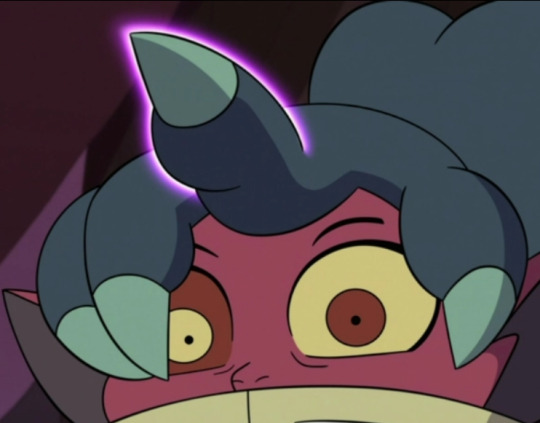
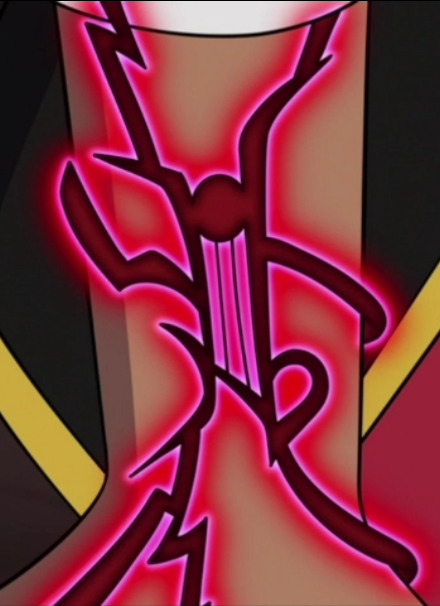
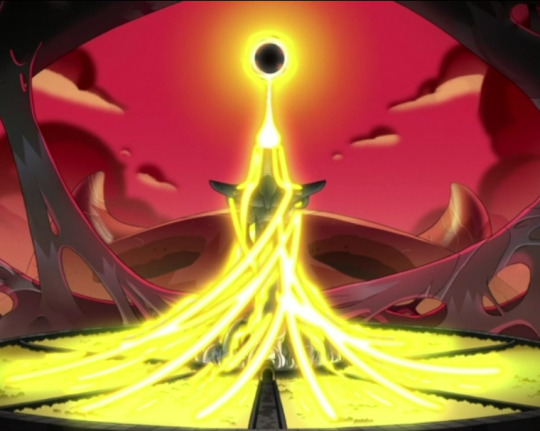

Notice any similarities?
The eye Kikimora reveals when she lifts that one hair-finger has a red sclera, yellow iris, and black pupil. Black on Yellow on Red.
The sky during the Day of Unity's eclipse is mostly red, but the eclipse itself is a black dot in a yellow corona. Black on Yellow on Red.
In both cases, the spell attacks a person (in this case Raine) via their coven sigil, and they even have similar effects, with sprawling veins and incapacitating qualities.
Could it mean nothing at all? Certainly.
It could've been entirely unintentional, just a happy little accident.
It could have been very intentional, just some subtle foreshadowing.
Is that gonna stop me from theorizing about the reasons these similarities might have come to be? Of course not!
As far as I know (which, I could very well have just missed something), Kikimora is the only character in the show with red sclera, but she's DEFINITELY the only one to be shown performing this spell on her own.
Was Kikimora specifically chosen as Belos's aide because of her potential capacity to perform such a spell? Like, Belos saw her weird eye, remembered something the Collector told him about the requirements for the draining spell, and went "YOU," before eventually teaching her the spell?
Was her eye modified/replaced to allow her to perform the spell, and thus to better serve her emperor? He's already known to favor unstable, power-hungry people in positions of power beneath him, so she could very well have gotten that job the normal way; then, it would just have been a matter of Belos (and probably whoever was head of the Healing Coven at the time) granting her the eye and teaching her the spell.
Is it just a coincidence that I'm reading WAY too hard into, even within the world of the show?
Who knows!
well. besides the showrunners. im sure one of them knows.
44 notes
·
View notes
Text
One of the things that fascinates me, thematically, about wizards in D&D is the consciousness of their interactions with magic. They learn their craft by study, by conscious thought. And they choose their school, too, by conscious thought. When you make a wizard, you choose what elements of magic they choose to prioritise. What draws them, what repels them, what do they rely on, what do they seek out. The choice of school is as much a characterisation detail as anything else. It’s not just a case of learning spells by rote out of a book (well, no, it can be, but that’s probably a discussion in and of itself). Wizards are the class where you can dig in and get nerdy. There’s magical theory up in this joint.
The eight schools in themselves are also an interest mesh of themes and rationalisations, and that makes sense from a Doylist perspectives, because the game designers are choosing schools and effects outside the game, but it also works from a Watsonian perspective, because these are in-universe classifications based on what wizards assume is how magic works. All the spells are tied to a school, and thus the eight-school classification system, even if there are wizards who aren’t. And with any system of classification, there are arguments. Which is, of course, the fun of it.
So. With that in mind. Eight schools. Abjuration. Conjuration. Divination. Enchantment. Evocation. Illusion. Necromancy. Transmutation. Some essay questions slash thought experiments slash personality quizzes for student wizards in a D&D world, focusing on the classification of magic:
If you were choosing (or have chosen) a school of magic to specialise in, what would it be?
What do you think is the overriding purpose of your school of magic?
What element of your school of magic excites you the most?
What is one common derogatory misconception about your school that makes you angry?
What’s one spell of your school that you think should belong to another school? Explain your reasoning.
What’s one spell of a different school that you think should belong to yours? Explain your reasoning.
What would you consider the school of magic most diametrically opposed to your own? Explain your reasoning.
What would you consider the school of magic most similar to your own? Explain your reasoning.
Name one area of overlap or potential overlap between your school of magic and each of the other seven.
Name one area of conflict or potential conflict between your school and each of the other seven.
Which other school of magic would you consider it necessary of have a good understanding of in order to better study your own?
If you were grouping the eight schools into subgroups, what would the groups be, which schools would they include, and why?
Do you consider the purpose of magic to be useful or to be extraordinary? Which schools do you think best match each outlook?
What do you consider the primary ethical concerns with your school of magic? What would you consider the primary ethical concerns with each of the other schools?
Which school of magic do you find most difficult or unpleasant to work with? Why?
Which school of magic do you find easiest and most reassuring to work with? Why?
What is one question about the workings of each school of magic that keeps you up at night?
Do you think that magic should be divided into schools at all? If you think that it should, do you think that the eight schools currently agreed upon are the most accurate choices, or do you believe that they should be rearranged or replaced?
Do you believe that rigid classification aids or hinders the understanding of magic as a whole? Explain your reasoning.
Do you think that a spell should be considered part of a school of magic based on its effect, or based on the methods or rationale that created it, or based on some other criteria?
Is there a school of magic that you considered to be particularly badly defined? Is there a school that you consider particularly well defined? Do you consider this a clarifying factor or a limiting one?
Which school of magic do you most want to disassemble to base parts and understand the workings of? Is this the same school you are happiest using, or a different one?
What is your favourite spell that you have learned of? Is that spell of your own school or a different one?
What is one spell of your least liked school of magic that you consider worthwhile, and why?
What is one spell that you think should never have been invented, and why?
And, finally, just for fun and so everyone knows where we all stand: which school of magic do you find the adherents of most annoying? Not necessarily the school you think shouldn’t exist, but the one where when you meet a wizard of that school, you kneejerk want to punch them in the face, just because?
#d&d#wizards#schools of magic#the eight schools#magical theory#essay questions to get asked in wizard college#i'm having a surprising amount of thoughts on conjuration
250 notes
·
View notes
Note
Do you think there’s a meaningful distinction between “witches” and other magic users in the marvel universe (beyond, potentially, gender)?
Witch and warlock are obviously treated more or less as gender-swapped synonyms and both have somewhat negative connotations that don’t get associated with people like Dr Strange (afaik), but I feel like there might be more to it, I’m just not sure. Calling Nico or Billy a witch feels more accurate than calling Cleo or Victor a witch, but I can’t figure out if this is grounded in anything besides my own opinion
Yes, actually! We can identify social, cultural, mythical and practical factors distinguishing "witches" from other types of magicians. However, those distinctions are not always clear. As you noted, the word "witch" is often used very broadly to describe any female spellcaster. As a reader, you'll have to rely on context to determine whether the writer is denoting a specific type of magician, or just using gendered language.
Functionally speaking, all forms of magic are basically interchangeable. Most spellcasters have the same powers and abilities, and writers don't always put in the effort to make them feel unique. That doesn't necessarily bother me, so long as they are tailoring the language and imagery to suit each character's background, but that doesn't happen as often as I'd like. Again, you'll just need to use critical thinking to figure out when a lack of distinction is really just a lack of creativity and effort.
With that out of the way, let's break down what we do know about witchcraft, and the history of witches, in the Marvel world!

Social: Witches have historically gathered in covens, settlements and societies, and have even endured literal witch-hunts. In real life, this is not quite the truth, but it Marvel comics, we can say that witches comprise distinct societies which suffer distinct forms of persecution. We also know that many witches belong to a magical lineage, and that these witch families often use a special naming convention to identify themselves with unique colors and symbols, indicating that witches have unique customs and traditions setting them apart.
Cultural: In Marvel comics, all forms of magical or spiritual folk practice are literally real, in the same way that all mythologies and polytheistic religions are literally real-- Asgard is a real place, Thor is a real person, and spells have real power. Witchcraft is typically represented as a form of European folk magic. Other traditions, such as vodou, voodoo, and multiple forms of Indigenous spirituality have also been demonstrated, and are often grouped together, along with witchcraft, under a broad category of "cultural magic." As shown in Midnight Suns, many of these traditions from around the world have a certain shared history, as the Coven at Mount Wundagore included representatives from numerous cultures.
Mythological: "Witchcraft" itself exists as an abstract entity, like Death, Nightmare, or Eternity. She is the source of witchcraft's power, but also a symbolic representation of all witches and the natural balance of magic, and she is sometimes worshipped as a goddess. Witchcraft resides at the heart of the Witches' Road, an Inner Plane uniquely accessible to witches that transcends time and is connected to many of the mythical realms. Witchcraft may also be intrinsically connected to chaos magic-- ancient witches were responsible for binding and harnessing Earth's natural chaos magic; Witchcraft, the entity, is shown consorting with an abstract Chaos entity; and we know that Wundagore and the Darkhold are connected to many cults and covens throughout history.
Practical: Unfortunately, this is the weakest area. For a brief time, Wanda's magical practice borrowed a lot of Wiccan motifs, which was problematic in its own right, but in modern comics, we just don't get to see enough of how witches, specifically, do magic. Most characters who practice some form of traditional magic have a closer connection to natural elements and the spirit world, and they may have particular powers related to their background. Doctor Voodoo is a great example, although the actual depiction of his culture is deeply flawed. Scarlet Witch (2015) introduced certain unique abilities, such as witches' sight; specific mechanics around the cost of magic; and a style of spellcasting that relied on Wanda's knowledge of real-world languages and magical symbols. Billy and Nico also use varying degrees of wordplay, so I like this approach and I would focus on building that into a cohesive magical system if I was a writer.
#wanda maximoff#scarlet witch#agatha harkness#billy kaplan#wiccan#nico minoru#jericho drumm#witchcraft#magical theory
32 notes
·
View notes
Text
I could write a whole essay on why I think high wizarding society looked down on using floo networks the same way that rich people look down on ppl using public transport.
Cause flooing doesn’t actually require any magical abilities, right? Anyone can floo, but not everyone can fly a broom or apparate. Portkeys are sort of like weird versions of taxis, you have to know the exact location and departure time of one to be able to use one.
Also flooing is just so inelegant, you have to step out of a fireplace with possibly wrinkly clothes and maybe even have to quickly them of soot or ash, I just don’t think snobby purebloods would ever use that feature if they can help it.
#harry potter#the marauders#Harry Potter lore#wizarding world#hogwarts#magical theory#harry potter fandom#Harry Potter discussion#idk what tags to use#the marauders fandom
40 notes
·
View notes
Text
I understand why a lot of people believe Merlin would be bad at teaching others magic, but tbh I disagree. I think that, given the time and resources to devote to his studies, he would quickly become a very good teacher.
My reasoning here is based primarily on the interpretation of sorcery as a rhetorical act. If magic is “the fabric of this world” and “the essence which binds all things together,” sorcery is the use of a language / sign system to persuade the world to alter itself in a particular way.
While at first glance, Merlin’s reliance on intuitive magic would seem to leave him ill-equipped to train ordinary sorcerers, his ability to feel magic, the raw life-energy of the world (which he perceives to be enhanced in sacred spaces), and even the emotional imprint that a spirit leaves behind (referring to the druid shrine in 4.10) indicates to me that he has always been at least subconsciously aware of the interweave of magic through the world.
What does this have to do with teaching, you ask? Well, here’s the thing. Most sorcerers have to train for years to master, for example, telekinetic spells. They have to learn, not just the Old Language itself, but the skill of magical oratory: word choice, inflection, demeanor, etc.
We see Merlin doing this in 1.02. I know it looks ridiculous when he tries to fake out the dog statue (because it is), but the way he moves around the room and experiments with saying the spell in different tones and at different speeds as well as adjusting his pronunciation— as if he’s appealing to the statue itself, trying to convince it to come alive— is, I think, founded in good practice.
Now, my suspicion is that studying magic out of books might leave one with the impression that there is A Right Way to intone a spell, and if you just learn it, then you can cast effectively. Whereas, if one is aware of the world as a living interlocutor rather than a passive object, they might be able to make a less formal and more personal appeal, which would both be more effective and require less rigid memorization of forms.
Merlin does have one advantage, of course, that doesn’t translate into better pedagogy: magic loves him. It’s going to be more inclined to do what he asks, and even preempt his requests by simply sensing what he needs and providing it, because he belongs to it and it to him on a more intimate level than other sorcerers.
#dude this has been sitting in my drafts for ages i just. forgot??#anyway here#bbc merlin#meta#magical theory
29 notes
·
View notes
Text
I feel like the word "visualize" is commonly used in spells and exercises instead of "imagine," because it feels more authentic and like you're not just playing make-believe, but I've got this theory that it really isn't any better, and could actually be holding a lot of people back.
As we know, some people think more in words, and some people think more in images. Some people have a hard time visualizing, or straight up can't do it.
Personally, I think in some words and some images, but mostly in a big abstract cloud of ideas and feelings which I have to translate into images or words in order to communicate. It's easier for me to translate ideas into words than images. When I do think in images they kind of just happen without me consciously creating them. To make them on purpose is a lot harder.
So, when you tell me to visualize a protective bubble (to use a recently mentioned example), I can do it, but it's not super solid. However, if you tell me to imagine a protective bubble, I can feel it and know it's there. I can know what color it is without having to see it. This is a much stronger bubble than the one I visualized.
Since I decided to quit trying to visualize and start imagining, things have become a lot easier for me, and have felt more solid. I'm also spending less time being distracted by the effort of maintaining a visualization.
Again, this is a theory, and of course your mileage may vary, but if you're someone for whom imagining is not an entirely visual process, it might be worth giving it a try.
987 notes
·
View notes
Text
Your original spells won't work for everyone and that's okay.
So I have this rusty cast iron cat statue that I received for free. I considered having it cleaned to use as a garden decoration but later decided that it would be great for a specialized ward.
With the warm weather approaching, I've been shifting my magical focus towards the outdoors. I care for the stray cats and am slowly involving myself in rescue work, which inspired me to design a ward for protecting strays who happen to pass through my yard.
I was very excited to share this with the general public and got to work drafting an instructional post. That's when it dawned on me: Not everyone has a cast iron cat statue just lying around. Most people would need to make a substitution.
In addition to this, I realized that the spell was too specific to my practice. It required a homemade herbal infusion, an offering schedule, and a working relationship with certain spirits. It was too inconvenient for the general practitioner to replicate.
While considering potential substitutes I concluded that my most crucial spell components were iron, rust, and a physical symbol of cats. Why would someone who follows an entirely different paradigm bother with all of my extra steps when they could just as easily ward with some catnip plants and railroad spikes?
Does this mean that I crafted a useless and needlessly complicated ward? That depends on who you ask. The spell was created to suit my personal practice and specific needs, so for me it will have greater potency than if it were designed for the use of a wider demographic. Even so, another practitioner might read over my notes and think "Why in the world would you do it this way?".
Don't get me wrong, there are plenty of original spells that are well-suited for widespread use. Others are tailor-made for specific people and prefer to be treated that way. I believe that this distinction is important because when you question whether your methods will work for others you're also forced to examine why they do seem to work for you and what changes you should make in order to produce more effective results.
#witchcraft#witchblr#spellwork#spellcraft#spellcasting#magical theory#beginner witchcraft#witchcraft community
16 notes
·
View notes
Text
How to set personal intentions

Hello friends! I get asked time and time again "what does this herb do?" or "What can I use this crystal for?" Im here to share that there is an easier way than collecting books, dozens of websites, and trying to memorize what everything is and why!
Where do correspondences come from?
Correspondences come from cultural adaptations of a specific tools usefulness! Another aspect is most of these stem from their medicinal uses as well. For example: The idea that calendula is for spiritual healing stems from the idea that many cultures use it for physical healing and it was used as a common cure-all
With all that said, no 2 cultures will have the same intentions for the same tool. A crystal of protection in one culture may be a crystals of travel in another. This can get confusing and leads us to a modern day issue of watering down a tools usefulness and intentions. I see so many books that just say "Basil - Money, Luck, Banishing." But dont list why something is that way, where did it come from.
I reposted a previous post about the importance of asking why something is, and I think it still holds up to this day. It not only gets your brain flowing, but it helps deepen your craft.
How do I find correspondences then?
First, if you want to take a more general and historic root, look into the history of a tool! If its a herb look at the general medicinal properties and why it can do what it does (Example: Basil is antimicrobial, and therefore healing, in a lot of cultures because of Eugenol, it is able to defend against protozoa and fungus). When it comes to crystals look into where its native too, where it grows, then do a cultural deep dive to explore the original connotations of a crystal. Now: You don't have to follow only this, this is just simply establishing a why.
After you have done all this, or even if you are still researching when you get a tool simply ask it what its for. You may find that your collection of mint is actually for safe travels, and your obsidian cant protect you from entities! This may contradict online sources but that's ok!!! your tools are unique to your space, revel in that! You have an arsenal at your disposal, enjoy that!
How do I ask?
First, grab the tool in between the palm of your hand, sit with it, and then ask "What can you assist me with" or if your about to start a spell "Are you the right tool for this job?" then let the tool speak to you via intuition. You will feel a sharp yes, no, or start to get a sense of what it does. If you are just starting to work on your intuition that's ok too, not only is this exercise great for strengthen that, it can be versatile. Adapt your questions into yes or no answers because our bodies have an easier time starting with that when producing energy.
With all that said I hope you all enjoyed! Keep asking questions and stay curious!
#grimoire#witchblr#pagan witch#magical theory#witchcraft#witch#spells#culturalexploration#baby witch#intentions#magick#pagan
72 notes
·
View notes
Text
Energy Sources For Long-term Spells
I see a lot of people talking about needing to recharge spells on here, so I wanted to bring this up. If you are going to have to keep recharging the spell, then what is the point of a long-term spell in the first place?
When you choose a power source for a spell, you should think about what you are trying to achieve. Most common power sources/energy sources are fine for quick one-off spells. But when you want a spell to act long-term with as little maintenance as possible, you have to keep that in mind when choosing how you are going to energize the spell.
It's the difference between using a battery with a finite power supply and plugging directly into an outlet.
For example, I live near a major theme park and a few major league sports venues. If I wanted to keep a spell going for a long time, I might tap into the excitement of the people at those places, since this is a continual supply and easily connected to.
Whereas something connected to, for example, a certain emotion will imbue that something with power for a while, but you won't feel that emotion all the time forever.
You could use moonlight or sunlight as a power source, but depending on how you connect to it, you may have a battery or an outlet. If you connect to the physical sunshine, you will have to recharge. If you connect to the energy stream of the sun itself, which is always shining whether we can see it or not, that will continually have power to draw from.
Food for thought. Happy spellcrafting!
200 notes
·
View notes
Text


Harry Potter book series and Hogwarts study books. I remade it and now its looks good! 17 swatches
DOWNLOAD FREE BOOSTY | SFS
UPDATED! SFS BOOSTY
@simder-talia-blog
#sims 4 cc#sims 4 custom content#sims4#ts4cc#ts4 download#ts4 witchy content#ts4 harry potter#harry potter#fantastic beasts#the tales of Beedle the bard#hogwarts#unfogging the future#magical theory#magical drafts and potions#history of magic#history of hogwarts#the standart book of spells#simblreen
197 notes
·
View notes
Text

Loki is so consistently my definition of magic and my weird moral compass.
Source: Young Avengers (2013) #15, by Kieron Gillen (writer), Ming Doyle and Maris Wicks (art), and Clayton Cowles (lettering)
#marvel comics#young avengers#loki laufeyson#kieron gillen#ming doyle#maris wicks#clayton cowles#magic#magical theory#stories#narrative logic#this is literally manifestation right here guys#this is literally how magic works#this is an issue about a new year’s eve party#and live a life that makes good stories has been my only new year’s resolution for like#the last 15 years
45 notes
·
View notes
Text
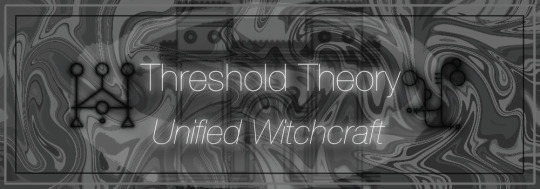
Suggested Reading
Path of Least Resistance
Anchors
Fundamentals of Energy Work
Energetic Senses
Conceptualization Vs. Visualization
Spell Design
Why Grey?
Introduction
Regardless of the type of working, all spellwork follows the same basic principles. These principles, when thoroughly understood, can be used to increase the effectiveness of a spell. While knowing and applying this concept isn’t necessary, it can be greatly beneficial. Since it is the basic underlying property of spell design, all spellwork will utilize it regardless.
{Note: STEM concepts are not necessary for magical practices, but using them can be invaluable.}
Nodes
Commonly referred to as correspondences, nodes are bits of information that tie objects, people, spirits, concepts, places, thoughts, feelings, and emotions together in order to create a desired effect. Each node is connected, at least subconsciously, by further bits of information. It can be helpful to think of these connections as a web or a woven cloth. It is because of this that creating your own correspondences is completely valid and functional. Nodes can also be constructed solely of mindsets and concepts. This type of working allows for the means of casting without anyone noticing. Especially when combined with gesture magic and/or energy work.
Thresholds
Thresholds are the foundations of spell work. Whenever Nodes come into contact with one another, it always results in a threshold. It is essentially the doorway through which a spell is projected. When a spell is constructed and cast, the threshold opens and passion projects the spell through it. The more nodes that make up a threshold, the more specific the results will be. However, bogging yourself down with a plethora of nodes could hinder your headspace. There is a balance between simplicity and complexity that is the most efficient. Finding this balance is something that is best understood through experience.
Statistical Dimensions
Whenever a new set of potential variables is added to a sample, the multitude of possible results expands exponentially. When casting spells, the more variables involved in the casting and goal lower the probability of it succeeding. I typically refer to this concept as the path of least resistance. Statistical dimensions can be controlled by creating networks and connections between each component of a working. They can also be controlled by choosing a goal that can happen within circumstances that have the least amount of variables. It is so important to try to avoid higher dimensional situations, which means that the number of dimensions are staggeringly high — so high that calculations, estimations, deductions, and inductions become extremely difficult. With high dimensional data, the number of features can exceed the number of observations. For each spell circumstances should be carefully considered. There will always be unknown variables like environmental happenings, intersocial happenings, seemingly random events, etc. It is best to try to minimize the number of possible unknowns when constructing a spell. One can use statistics and neural network structures to prepare for unknown variables. Actual math isn’t necessarily required to do this. A solid conceptualization can also work. One way would be through adaptive control, which is “the control method used by a controller which must adapt to a controlled system with parameters which vary, or are initially uncertain.”** Another method is estimation theory, which is “a branch of statistics that deals with estimating the values of parameters based on measured empirical data that has a random component. The parameters describe an underlying physical setting in such a way that their value affects the distribution of the measured data. An estimator attempts to approximate the unknown parameters using the measurements. In estimation theory, two approaches are generally considered:
The probabilistic approach assumes that the measured data is random with probability distribution dependent on the parameters of interest
The set-membership approach assumes that the measured data vector belongs to a set which depends on the parameter vector.”***
Sympathetic Magic
Whenever objects, herbs, tools, colors, etc. are used in a spell, the spell is considered a sympathetic spell. The nodes are constructed from associations rather than direct connections. Sympathetic spells have higher statistical dimensions because circumstances cannot be directly observed, and thus one has to account for much more unknown variables. Oftentimes sympathetic magic can be incorporated into direct magic, or non-sympathetic magic, in order to develop a more thorough threshold. Pure sympathetic magic requires a taglock and an anchor for a working. Whether it be hair, photo, candle, or crystal, the spell will have to be bound to associated items. Sympathetic magics are best used for protective or warding spells, while direct magic is best for curses, cleansing, grounding, or cursing.
Non-Sympathetic Magic
Anytime a spell is cast directly onto a target that is within line of site or within one’s energetic awareness, the circumstances in which the spell must maneuver are, for the most part, observable. Non-sympathetic magic is easiest to do via energy work or gesture magic, as they are less conspicuous. Binding spells directly to a person’s subtle body allows for the manifestation of the working to be evoked from the inside outwards, rather than the outside inwards. Working directly with that target allows for substantially more control over the spell and its outcome. Direct magic can be used to ward as well if you are in the space and working with it directly. The more familiar with the space/target you are, the more effective direct magic will be.
Sustaining Thresholds
Thresholds are only as lasting as the caster’s headspace and focus. As a practitioner loses focus, the threshold will start to break down. While a threshold is typically sustained by the practitioner throughout a working, they can also be crystalized and anchored to an object that can sustain them. However, the medium that is used to anchor it will affect how long it can be sustained. To read further on mediums for anchoring, check out my article on anchors linked above.
While a threshold is anchored it is best to hold the object while casting, entering into the proper headspace. If the practitioner has a solid grasp on energy work and the energetic senses, then they need not interact directly with the anchor to use the threshold.
Self-Modifying Thresholds
When creating a complicated threshold that accounts for a large number of circumstantial variations, it may be best to actually create a thoughtform that embodies the spell. This thoughtform must contain as many logical processes as possible so that it has the tools to adapt as the situation changes. Thoughtforms do require being physically anchored in order to be sustained, and their binding should allow for them to stray from the anchor as needed. When creating a thoughtform-bound spell, it is important to have a way to banish it on standby.
References and suggested resources for study
Wiki on Adaptive Control**
Wiki on Estimation Theory***
To read about me, the service I provide, my other content, or to support me on other platforms, see this link!
#informational post#magical theory#advanced spellcraft#advanced witchcraft#advanced magic#Witchcraft and STEM#Gtheory
113 notes
·
View notes